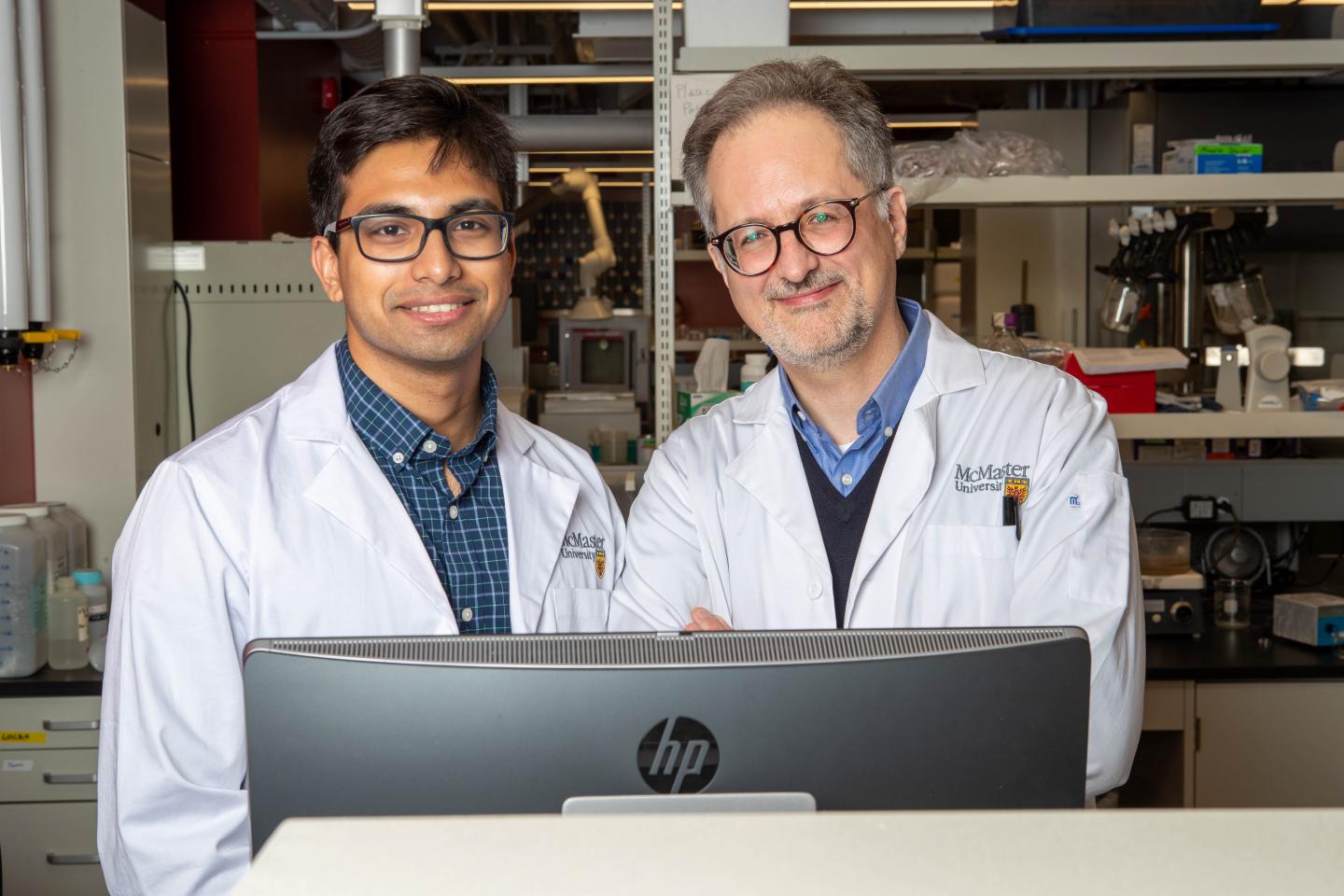
Credit: Georgia Kirkos, McMaster University
A team of researchers from McMaster University has mapped at atomic resolution a toxic protein linked to Alzheimer’s disease, allowing them to better understand what is happening deep within the brain during the earliest stages of the disease.
The findings, published on the front cover of the current edition of the Royal Society of Chemistry flagship journal Chemical Science, provide new insights into the behavior of one of the prime suspects of Alzheimer’s disease: a protein fragment known as amyloid beta, which clumps together into oligomers during the early stages of the disease.
Researchers liken amyloid beta oligomers to a neurotoxic ‘bomb’, causing the irreversible death of neurons.
“To defuse the bomb, we need to know with a high degree of precision which wires to cut and which to avoid,” explains Giuseppe Melacini, senior author and a professor in the Departments of Chemistry and Chemical Biology as well as Biochemistry and Biomedical Sciences at McMaster University.
“This is why it is critical to map the structural features that differentiate what is toxic and what is not. However, this is a challenging task due to the transient and elusive nature of these oligomers,” he says.
Melacini, who has studied the underlying mechanisms of Alzheimer’s for nearly two decades, is working with a team of physicists, chemists, biologists and dementia specialists at McMaster, including Maikel Rheinstädter, Richard Epand, Ryan Wylie and Chris Verschoor. Each team member brings a unique perspective and specialty to an investigation which requires highly specialized equipment, including wide-angle X-ray diffraction and nuclear magnetic resonance (NMR) to conduct the analysis at the atomic level.
For the study, the team used a library of natural products extracted from green tea that are believed to interfere with the formation of the toxic protein oligomers to varying degrees. Using this toolkit they were able to build oligomers with different toxicities, allowing the team to gain unprecedented insights into how they interact with neurons and cause cell death.
They hope this research can help them determine how to defuse the neurotoxic bomb.
“Alzheimer’s disease is a major medical, social and economic problem,” says Rashik Ahmed, the lead author on the paper and PhD candidate in the Department of Biochemistry and Biomedical Sciences. “This research is the first step towards identifying how we can stop the progression of Alzheimer’s disease before it becomes irreparable.”
By some estimates, there are more than half a million Canadians living with dementia and the number is expected to reach more than a million by the year 2031. Once symptoms emerge, there is no known cure for Alzheimer’s and treatment options are limited.
###
Media Contact
Michelle Donovan
[email protected]




